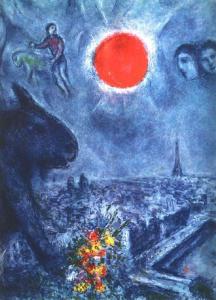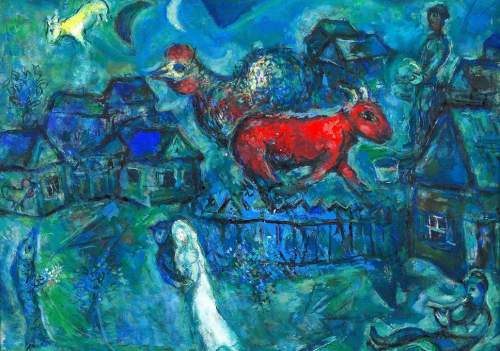
Follow the Heart— Coming to Principle Gallery, June 2024
Look at every path closely and deliberately. Try it as many times as you think necessary. Then ask yourself, and yourself alone, one question… Does this path have a heart? If it does, the path is good; if it doesn’t, it is of no use.
—Carlos Castaneda, The Teachings of Don Juan (1968)
The painting above is a new painting that is 20″ high by 16″ wide on canvas. It is part of Continuum: The RedTree at 25, my 25th annual solo show at the Principle Gallery, which opens June 14.
The title is Follow the Heart which is taken from the passage above from Carlos Castaneda. I saw this piece as being about the choices that come before us through our lives, even as I was painting it which is a bit out of the norm. Whatever message a painting transmits to me usually isn’t fully evident until it is complete or nearly so.
I think that’s because, even though I am often stepping away and taking it as a whole in order to determine balance, I am usually focused on whatever smaller bit is in front of me at the moment. That goes back to a personal goal I set back when I first started painting. I always felt that if I could make every square inch of the surface have some visual interest of its own yet still harmonize with all the other square inches, then ultimately the piece would be sure to come alive.
I would like to believe that if you looked at any part of the surface of a piece you would find something visually interesting in it. That’s one of the reasons I prefer to float my canvasses and mat my works on paper with their edges exposed. Every bit, even the far edges, play a part in the painting, and I don’t like covering any part of it.
But getting back to Follow the Heart, I felt that there was a lot of motion in it, with the winding path and stream, and the little path that moves up the streambank. All seemed to indicate possibility, different paths that could be followed. The sun in the sky literally serves as guiding compass here and the clouds represent the movement of time.
The RedTree seems to ask: Which way do we go and how do we choose?
That’s where the Castaneda passage comes into play. Only you can determine the heart of any path. Others will tell you what is the right path but they can only recognize the heart of the path they know. They can’t hear the know what path holds a beating heart for you. And if you follow a path whose heart that doesn’t beat for you, it will never fully satisfy the needs and wants that only you know.
So, follow the heart.
It sounds easy but, of course, it isn’t. Others will still judge and criticize because they think their path is the one and only path. They may never hear the heartbeat of your path. And that’s okay. So long as you hear that heartbeat their opinions won’t matter much.
Here’s a song for this week’s Sunday Morning Music that pretty much sums it all up. It’s Andra Day channeling the spirit of Billie Holiday with the oft-covered blues classic, Ain’t Nobody’s Business.
Good advice for those listening for the heartbeat of a path.














